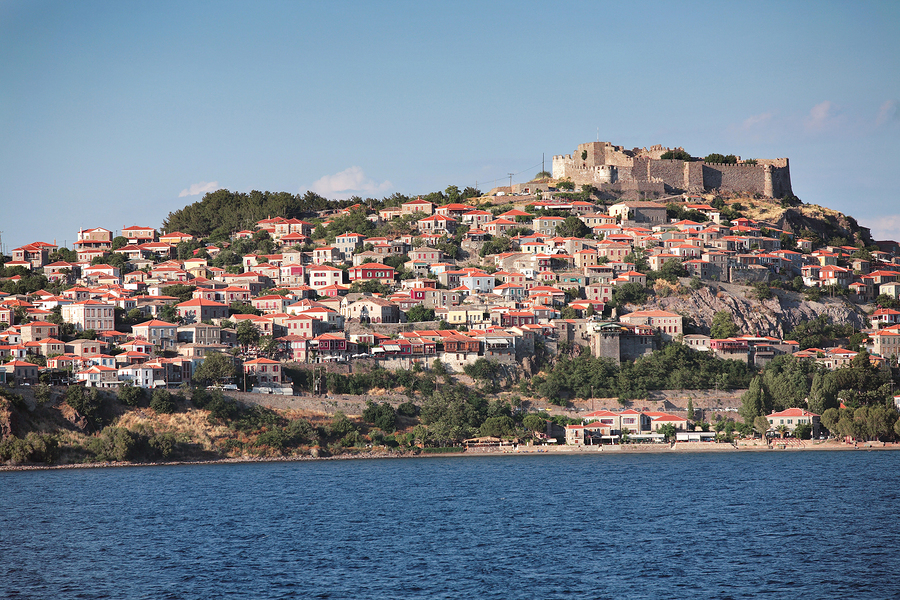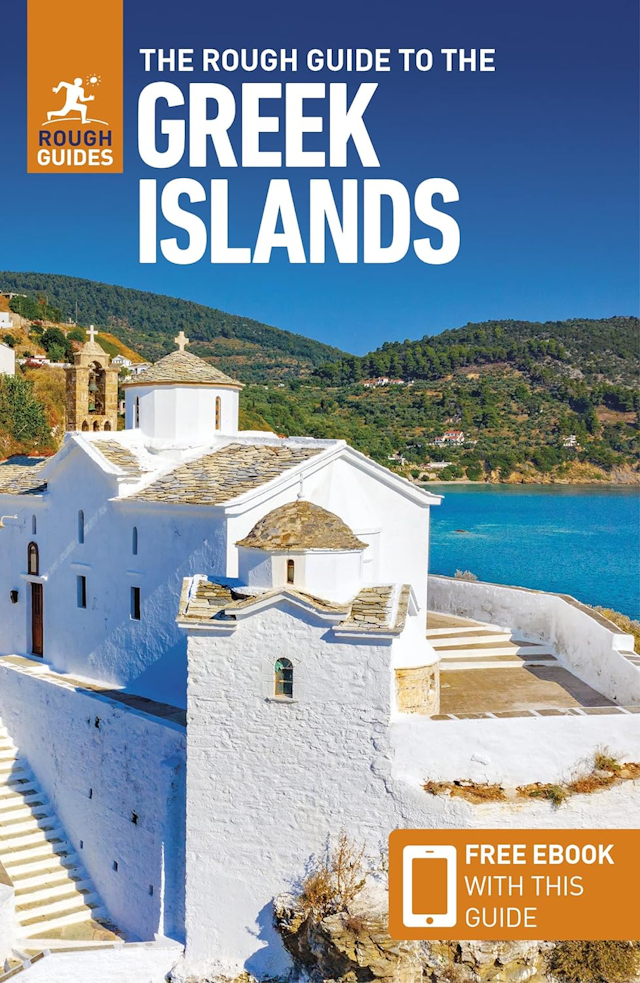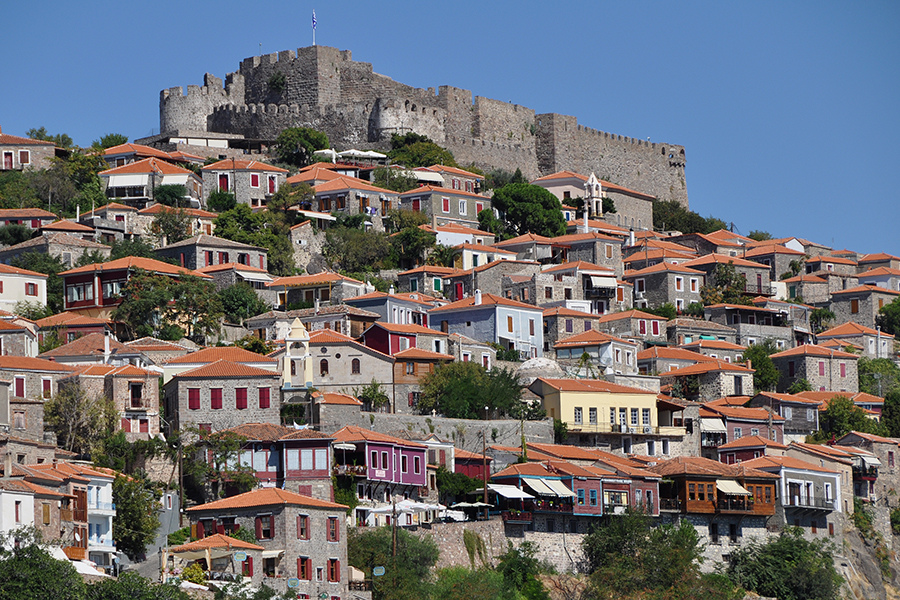- HOME
- NE Aegean Isles
- Lesbos
- Best Time to Visit Lesbos
Best Time to Visit Lesbos
Greece Travel Secrets picks the best time to visit Lesbos, with a monthly summary of the weather, plus hotel prices and special events to help plan a visit.
Welcome to the island of Lesbos, a paradise valued by many for its culture-rich towns, picturesque landscapes, and beaches by the clear blue Aegean Sea. The climate of Lesbos is predominantly Mediterranean, with hot summers and mild winters.
If you're plotting your itinerary and wondering about the best time to visit Lesbos, consider factors such as weather comfort, hotel prices, crowd density, and special events. Let's dive into a month-to-month breakdown of these details.
Best Time to Visit Lesbos Month-by-Month
January is the coldest month in Lesbos, with average temperatures between 35°F - 54°F (1.6°C - 12°C). Rainfall averages around 3.8 inches (about 96.5 millimetres), and being a Mediterranean island, snowfall is rare. Festivities like the Epiphany on January 6th light up the region, which could enhance your visit. Hotel prices at this time are relatively low due to it being off-peak season.
February is a bit chilly, averaging between 37°F - 55°F (2.7°C - 12.7°C), with average rainfall at approximately 2.1 inches (53.5 millimetres). The month holds the carnival of Apokries, a colourful, loud celebration with events around the island. Accommodation prices are relatively low during this off-peak season.
In March, the weather starts to warm, with temperatures averaging between 41°F - 59°F (5°C - 15°C). Rainfall drops to about 2 inches (50.8 millimetres). Although there are no significant festivals during this month, the blooming landscapes are a sight to behold. Hotel prices begin to rise in anticipation of the tourist season.
April brings beautiful spring weather, with temperatures averaging between 47°F - 66°F (8.3°C - 18.8°C), and rainfall lowering to roughly 1.2 inches (30.5 millimetres). Easter celebrations, featuring church parades and local customs, make April an exciting time to visit. Accommodation costs start increasing as the tourist influx begins.
May sports comfortably warm days between 56°F - 75°F (13.3°C - 23.8°C), and average rainfall of only 0.6 inches (15.2 millimetres). The annual Bird Watching Festival will appeal to nature enthusiasts, with Lesbos being one of Europe's top bird-spotting regions. However, expect slightly higher hotel prices due to the peak tourist season approaching.
Visiting in June offers excellent beach weather, with average temperatures between 64°F - 84°F (17.7°C - 28.8°C). Rainfall is minimal at only 0.3 inches (7.6 millimetres). The Petrified Forest Festival near Sigri offers a cultural feast, but hotel prices during this peak time could be a bit high.
July is the hottest month, with temperatures between 70°F - 87°F (21.1°C - 30.5°C), and rainfall is almost non-existent at 0.1 inches (2.5 millimetres). Watch for the island-wide Lesbos Food Festival, and the ideal weather makes for great beach visits. Late June/early July also sees the Lesbos Ouzo Festival - the island is renowned as the home of ouzo in Greece. Bear in mind, hotel prices are at their highest this month.
August continues the summer trend with temperatures averaging between 69°F - 86°F (20.5°C - 30°C), with rainfall remaining minimal. The month is known for cultural and music festivals across the island, but do prepare for possibly the highest accommodation prices.
September heralds the start of cooling temperatures between 62°F - 79°F (16.6°C - 26.1°C) and rainfall increasing slightly to 0.5 inches (12.7 millimetres). The annual Wine Festival in Mytilene is a must-see for wine buffs! Hotel prices start to drop with the end of peak season.
October averages comfortable temperatures between 54°F - 71°F (12.2°C - 21.6°C), with rainfall increasing to 1.6 inches (40.6 millimetres). As it's the period of the olive harvest, you can witness traditional olive picking and oil production. Accommodation costs drop further, making it a cheaper time to visit.
November ushers in lower temperatures, ranging between 47°F - 63°F (8.3°C - 17.2°C), and rain increases to about 3 inches (76.2 millimetres). There aren't any significant festivals, but lower visitor numbers and even lower hotel prices make for a quieter, more relaxed visit.
December, like January, is cool, with temperatures ranging between 40°F - 57°F (4.4°C - 13.8°C). Average rainfall during this period is around 3.9 inches (99 millimetres). Christmas is celebrated with local traditions, making for an interesting cultural experience. Hotel prices are the lowest during this month.
Best Time to Visit Lesbos Summary
So, what's the definitive answer to the best time to visit
Lesbos? Well, it depends on your individual preferences.
If you're a sun-seeker and beach lover, then June through August would be your ideal months. The temperatures are high, and the rainfall is minimal, perfect for lounging on Lesbos's beautiful beaches.
However, if you're looking to witness some of the island's vibrant festivities, consider visiting in January for the Epiphany, February for the Apokries Carnival, April for the Easter celebrations, or September for the Wine Festival.
If bird watching is your pastime, May's Bird Watching Festival is an event you shouldn't miss. Lesbos is a prime bird-spotting location, with its diverse habitats attracting a wide variety of species.
Budget travelers might prefer the off-peak period between November to March. Although the weather is colder with a higher chance of rain, the significantly lower hotel costs may offset this. Additionally, the reduced crowd numbers during these months provide a more serene and personal experience.
Nature lovers would find spring (March to May) appealing, as the landscape comes alive with greenery and blossoms, making for picturesque views and cooler temperatures for explorative walks.
For those seeking an authentic local experience, visiting in October allows you witness the traditional olive harvest, an integral part of Lesbos' lifestyle and economy.
In short, the best time to visit Lesbos is the time that’s best for you. There are reasons to go throughout the year.
Latest Posts
-
The Lesser-Known Traditions of Greek Easter
Step off the beaten path this spring and discover the enchanting — and often surprising — Easter traditions found across Greece. -
Easter in the Mystical Castle of Monemvasia
In the castle town of Monemvasia, with its dramatic medieval backdrop and sea views, Easter is a deeply spiritual and atmospheric experience. -
Sifnos: Greece’s Hidden Culinary Star on the Rise
Sifnos, a Cycladic island, is gaining fame for its rich culinary heritage, especially the beloved melopita honey-cheese tart. -
Easter in Leonidio: A Tapestry of Light, Culture and Cliffs
In Leonidio, Easter comes alive with handmade hot air balloons in the sky and lanterns made from bitter oranges in the streets. -
April 9 Strike in Greece to Impact Public Transport, Ferries and Air Travel
Transportation and travel across Greece will face disruptions on Wednesday, April 9, as public transport, ferry and aviation workers join a nationwide strike called by Greek labor unions. -
Ancient Theater of Lefkada Brought Fully to Light Following Systematic Excavation
The Greek Culture Ministry has announced that the first ancient theater ever identified in the Ionian Islands has recently been brought fully to light on Lefkada, revealing an impressive monument that… -
Seven Greek Traditions Recognized as Intangible Cultural Heritage
From traditional barrel-making to age-old folk dances, seven new entries on Greece’s National Inventory preserve the country’s living heritage for future generations. -
Greek Air Traffic Controllers to Hold 24-hour Strike, Disrupting Flights on April 9
The Hellenic Air Traffic Controllers Union have announced a 24-hour strike for Wednesday, April 9, in response to the protest called by the Civil Servants’ Confederation (ADEDY). The strike is being h… -
Ten Best Budget Hotels on Santorini
Greece Travel Secrets picks the ten best budget hotels on Santorini, some with caldera views, some near beaches and some close to the heart of Fira. -
No Ferries in Greece on April 9 as Seamen Join Nationwide Strike
The Pan-Hellenic Seamen’s Federation (PNO) has announced its participation in the 24-hour strike called by the General Confederation of Greek Labor (GSEE) on Wednesday, April 9. The strike, which will…










